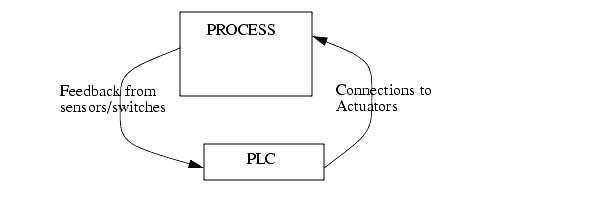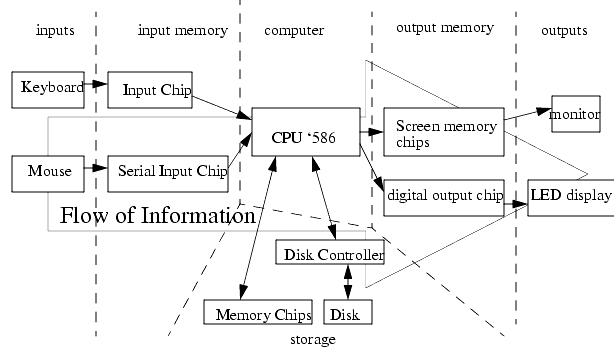
|
|
|
10.2 WHAT DOES LADDER LOGIC DO?
������������10.2.1 Connecting A PLC To A Process
������������

The PLC continuously scans the inputs and changes the outputs.
The process can be anything - a large press, a car, a security door, a blast furnace, etc.
As inputs change (e.g. a start button), the outputs will be changed. This will cause the process to change and new inputs to the PLC will be received.

10.2.2 PLC Operation
������������Remember: The PLC is a computer. Computers have basic components, as shown below:

In fact the computer above looks more like the one below:

Notice that in this computer, outputs aren't connected to the CPU directly.
A PLC will scan a copy of all inputs into memory. After this, the ladder logic program is run once and it creates a temporary table of all outputs in memory. This table is then written to the outputs after the ladder logic program is done. This continues indefinitely while the PLC is running.
PLC operation can be shown with a time-line -

SELF TEST - Checks to see if all cards error free, resets watch-dog timer, etc. (A watchdog timer will cause an error, and shut down the PLC if not reset within a short period of time - this would indicate that the ladder logic is not being scanned normally).
INPUT SCAN - Reads input values from the chips in the input cards and copies their values to memory. This makes the PLC operation faster and avoids cases where an input changes from the start to the end of the program (e.g., an emergency stop). There are special PLC functions that read the inputs directly and avoid the input tables.
LOGIC SOLVE/SCAN - Based on the input table in memory, the program is executed one step at a time, and outputs are updated. This is the focus of the later sections.
Search for More: |

Custom Search
|

|